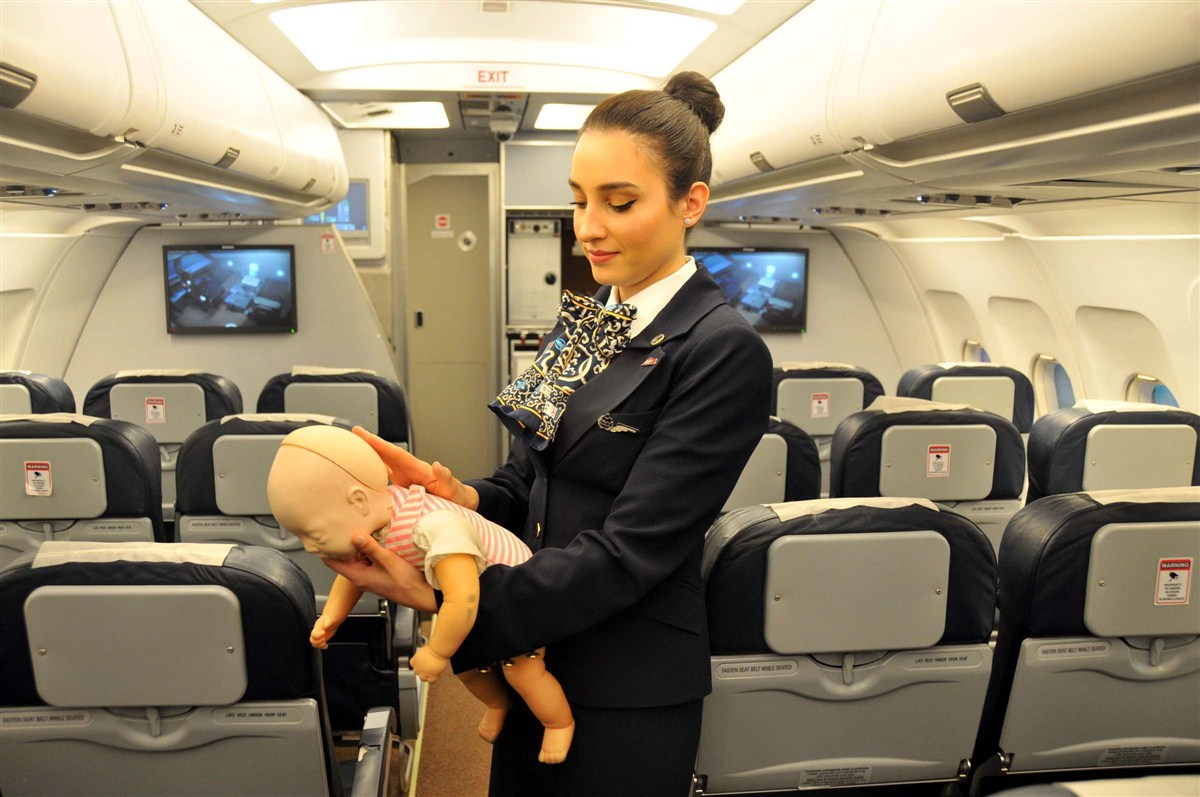
Ever wondered what it takes to become a licensed flight crew member? Buckle up as we take off into the world of flight crew licensing. From rigorous training to stringent exams, the journey to earning those wings is no small feat. Flight crew licensing ensures that pilots and cabin crew meet the highest safety standards, making air travel one of the safest modes of transportation. Whether you're dreaming of piloting a jumbo jet or ensuring passenger comfort at 30,000 feet, understanding the licensing process is crucial. Let's explore 14 fascinating facts about what it takes to join the elite ranks of the flight crew.
Key Takeaways:
- Flight crew licensing ensures pilots are well-trained and tested to operate aircraft safely. Different licenses, rigorous training, and regular medical checks are essential for maintaining competence and safety.
- Pilots must pass written exams, practical flight tests, and medical examinations to obtain and maintain their licenses. Special endorsements and international recognition allow for diverse flying opportunities.
What is Flight Crew Licensing?
Flight crew licensing ensures that pilots and other crew members meet the necessary standards to operate aircraft safely. These licenses are issued by aviation authorities and require rigorous training and examinations.
-
Licensing Authorities: Different countries have their own aviation authorities responsible for issuing flight crew licenses. For example, the Federal Aviation Administration (FAA) in the United States and the European Union Aviation Safety Agency (EASA) in Europe.
-
Types of Licenses: There are various types of flight crew licenses, including Private Pilot License (PPL), Commercial Pilot License (CPL), and Airline Transport Pilot License (ATPL). Each license has different requirements and privileges.
Training Requirements
Becoming a licensed flight crew member involves extensive training. This training ensures that crew members are well-prepared for various scenarios they may encounter.
-
Ground School: Before taking to the skies, aspiring pilots must complete ground school. This involves learning about aerodynamics, navigation, meteorology, and aviation regulations.
-
Flight Hours: Accumulating flight hours is crucial. For a PPL, a minimum of 40 flight hours is typically required, while a CPL may require around 250 hours.
-
Simulator Training: Modern flight simulators provide realistic training environments. They allow pilots to practice emergency procedures and complex maneuvers without the risks associated with actual flight.
Examinations and Tests
To obtain a flight crew license, candidates must pass several examinations and tests. These assessments ensure that they have the necessary knowledge and skills.
-
Written Exams: Written exams test knowledge on various subjects, including air law, flight planning, and human performance.
-
Practical Flight Test: Also known as a check ride, this test involves demonstrating flying skills to an examiner. It includes tasks like takeoffs, landings, and emergency procedures.
-
Medical Examination: Pilots must pass a medical examination to ensure they are physically fit to fly. This includes vision and hearing tests, as well as checks for any medical conditions that could impair their ability to operate an aircraft.
Maintaining a License
Once obtained, a flight crew license must be maintained through regular training and medical checks. This ensures that crew members remain competent and healthy.
-
Recurrent Training: Pilots must undergo recurrent training, usually annually, to refresh their skills and knowledge. This often includes simulator sessions and classroom instruction.
-
Medical Renewals: Pilots must regularly renew their medical certificates. The frequency of renewals depends on the type of license and the pilot's age.
Special Endorsements and Ratings
In addition to basic licenses, pilots can obtain special endorsements and ratings that allow them to operate different types of aircraft or perform specific tasks.
-
Instrument Rating: An instrument rating allows pilots to fly in poor weather conditions using only their instruments. This requires additional training and testing.
-
Type Rating: To fly certain complex aircraft, pilots need a type rating. This involves specific training for that aircraft type, including simulator sessions and flight tests.
-
Multi-Engine Rating: A multi-engine rating permits pilots to operate aircraft with more than one engine. This requires additional training to handle the complexities of multi-engine flight.
International Recognition
Flight crew licenses are often recognized internationally, allowing pilots to operate in different countries. However, some additional steps may be required.
- License Conversion: Pilots may need to convert their licenses when moving to a different country. This can involve additional exams and flight tests to meet the new country's standards.
Final Thoughts on Flight Crew Licensing
Flight crew licensing is more than just a piece of paper. It’s a testament to rigorous training, dedication, and a commitment to safety. Pilots and flight attendants undergo extensive education and testing to ensure they can handle any situation in the air. From understanding complex aircraft systems to mastering emergency procedures, these professionals are well-prepared for their roles. Licensing also ensures that crew members meet international standards, making air travel safer for everyone. Next time you board a plane, remember the hard work and expertise that go into getting that flight crew ready to serve you. Their licenses are proof of their skills and dedication to keeping passengers safe. So, the next time you fly, take a moment to appreciate the journey they’ve taken to get there. Safe travels!
Frequently Asked Questions
Was this page helpful?
Our commitment to delivering trustworthy and engaging content is at the heart of what we do. Each fact on our site is contributed by real users like you, bringing a wealth of diverse insights and information. To ensure the highest standards of accuracy and reliability, our dedicated editors meticulously review each submission. This process guarantees that the facts we share are not only fascinating but also credible. Trust in our commitment to quality and authenticity as you explore and learn with us.


